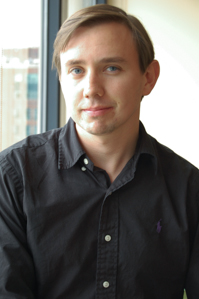
Understanding why some strains of HIV may be more infectious than others may provide critical clues to developing an HIV vaccine that effectively blocks HIV transmission.
A study in the journal PLoS Pathogens, led by researchers at the Ragon Institute of Mass General, MIT, and Harvard have decoded new information about the genetic makeup of HIV strains that successfully establish infection in the two primary risk groups responsible for driving the global HIV pandemic, Men who have Sex with Men (MSM) and heterosexuals (HSX).
The Ragon investigators applied an approach called pyrosequencing that allows for the simultaneous sequencing of hundreds of viral variants within an individual’s blood sample, enabling them to sensitively determine the precise nature of the strain of HIV that infected each individual. In this study the investigators found that regardless of the route of transmission, MSM and HSX individuals were equally likely to be infected by a single “founder” strain of HIV, in contrast to earlier reports that higher-risk MSM transmission frequently results in infection by multiple HIV strains.
“These data were surprising given the long-held belief that higher-risk exposures to HIV often result in the transmission of multiple distinct clones of the virus that themselves have been associated with more rapid disease progression” says Todd Allen, Ph.D., senior author of the study and a Ragon Institute faculty member. Thus, despite the higher epidemiological risk of HIV acquisition in MSM this increased risk does not translate into a more complex initial infection characterized by the transmission of an increased number of viruses.
Based on these surprising results the authors hypothesized that differences between these two risk groups might exist in the types of viruses establishing infection.
“We reasoned that the incoming virus would be under different selective pressures depending upon the route of infection and would need to rapidly adapt resulting in distinct genetic mutations in the virus” added study lead author Dr. Damien Tully.

Dr. Damien Tully
Indeed, the authors found broad differences in the magnitude of selection upon HIV between the two modes of sexual transmission and identified a number of novel genetic mutations within the viral Envelope protein that is critical for viral entry. These signature mutations or ‘genetic footprints’ appear to be important for successful transmission of the virus to initiate a productive clinical infection. “These findings underscore the genetic plasticity of the virus to overcome host defenses, but moreover that these adaptations differ depending upon the mode of sexual transmission” said Tully.
Given the primary goal of AIDS vaccine development is to block HIV at the site of transmission to prevent acquisition these findings identify specific residues of the virus that are important for transmission that could represent novel HIV vaccine targets. Efforts are underway at the Ragon Institute to harness these findings to develop and test novel vaccine approaches against HIV that limit its ability to mutate and escape immune control.
The study was funded in part by the National Institute of Allergy and Infectious Diseases (NIAID), part of the National Institutes of Health (NIH) and the American Foundation for AIDS Research (amfAR).
Additional co-authors of the study are Colin Ogilvie, Rebecca Batorsky, David Bean, Karen Power, Musie Ghebremichael, Hunter Bedard, Adrianne Gladden, Aaron Seese, Molly Amero, Kimberly Lane, Bruce Walker and Marcus Altfeld, Ragon Institute of Mass General, MIT, and Harvard; Graham McGrath, Suzane Bazner, Eric Rosenberg, Division of Infectious Disease, Massachusetts General Hospital; Jake Tinsley, Kenneth Mayer, Fenway Institute; Niall Lennon, Matthew Henn, Broad Institute of MIT and Harvard; Zabrina Brumme, Simon Fraser University; Philip Norris, Blood Systems Research Institute; Heiko Jessen, HIV Clinic Praxis; Sergei Kosakovsky Pond, University of California San Diego; and Jonathan Carlson, Microsoft Research.